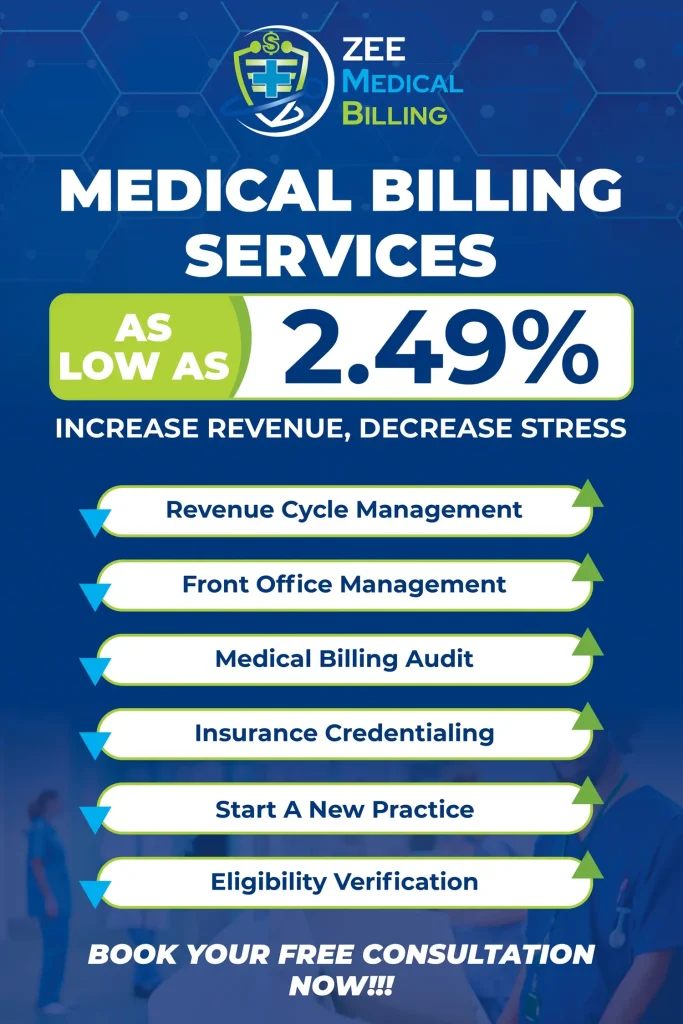While choosing a behavioral billing system for your medical business, it’s vital to consider factors, for example, versatility, consistency with industry standards, combination with electronic health records (EHR) systems, and vigorous detailing capacities. Furthermore, assessing the degree of client assistance and preparation given by the billing system vendor can significantly influence effective implementation and continuous operations.
1. Understand Your Practice’s Requirements
- Service Types: Consider whether your training offers individual treatment, group therapy, telehealth, or medication management.
- Practice Size: Assess whether the system supports your patient volume and future development.
- Compliance Requirements: Guarantee the system lines up with HIPAA, payer regulations, and state-explicit behavioral health mandates.
2. Features to Search For
a) Insurance and Claims Management
- Eligibility Check: Automate insurance verification to affirm patient coverage continuously.
- Claims Scrubbing: Search for features that recognize mistakes before submission to limit denials.
- Denial Tracking: Guarantee the system offers tools to effectively track, appeal, and resolve denied claims.
Read More: Mental Health Billing Service With Revenue Cycle Management
b) Incorporated Patient Administration
- Planning and Billing Select a system that interfaces arrangement booking with billing work processes.
- Patient Portals: Offer patients access to cover bills on the web, view explanations, or set up payment plans.
c) Telehealth Incorporation
With telehealth services becoming more common, pick frameworks that help with consistent billing for virtual visits.
d) Reporting and Analytics
- Financial Metrics: Track measurements like collections, extraordinary cases, and billing performance.
- Custom Reports: Create reports tailored to your training’s requirements for deeper experiences.
3. Usability
- Intuitive Interface: Pick a system that improves on tasks for staff with minimal preparation.
- Mobile Compatibility: Guarantee access to cell phones for on-the-go flexibility.
4. Scalability and Customization
- Scalability: Decide on a system that develops with your work, adding features as needed.
- Customization: Pick a platform that adjusts to the special work processes of behavioral health practices.
5. Information Security and Consistency
- HIPAA Compliance: Affirm the system meets severe information protection and security necessities.
- Data Backup: Guarantee regular backups to safeguard against information loss.
6. Customer Support
- Availability: Search for providers offering all-day, everyday support for technical issues.
- Training Resources: Guarantee access to client guides, tutorials, and onboarding assistance.
7. Cost Considerations
- Transparent Pricing: Search for systems with direct evaluating models.
- ROI Analysis: Contrast forthright expenses and expected time and revenue savings.
Executing a Behavioural Billing System in Your Business
Going with the choice to execute another behavioral health billing is a huge achievement for your business. It compels you to rethink your current work processes and adjust to new cycles. Here are the key advances you need to take to guarantee an effective implementation that boosts proficiency and keeps up with consistency.
Needs Assessment
Before jumping into the implementation interaction, it is important to conduct a thorough assessment. This implies dissecting your work on billing necessities, understanding, and archiving your current work processes, and identifying any gaps and inefficiencies that should be tended to with the new billing system. By doing this, you can pinpoint explicit targets for carrying out the new system. Also, include your staff in this appraisal; their bits of knowledge and experience are important in figuring out the pragmatic requirements of the billing activities.
It’s not just about sorting out what you believe the billing system should do; it’s tied in with understanding how it needs to help you. Evaluate how your current system might be missing the mark and recognize explicit trouble spots that need tending to.
Are there repeating issues with claim submissions? Are certain tasks taking more time than they should? Realizing these details will assist you with adjusting your objectives to the functionalities of the new framework.
Read More: Best Mental Health Billing Services In USA
Vendor Choice
Choosing the right seller goes past picking a product bundle; it’s about laying out an organization that will uphold your business into the future. Research and talk with various system sellers to comprehend their items, including implementation support, preparing assets, and progressing client assistance. Talk directly with representatives from every vendor to get a sense of their obligation to client care and problem-solving. Settle on sellers who offer responsive customer support because, when you begin using the framework, having reliable help promptly accessible would be significant.
Consider asking specific questions, for example, “What sort of support is given during the performance stage?” Or “Are there devoted account managers available for investigating and support?”
Training and Transition
Putting resources into extensive training for your staff is fundamental in guaranteeing they remain capable of using the new system. Work intimately with your chosen vendor to foster a training plan customized to your training’s particular necessities and work processes. This could incorporate online learning modules, on-site meetings, or access to exhaustive preparation materials. Moreover, team up with the vendor to make a smooth change plan during the implementation stage. A phased approach to dealing with change can assist with limiting interruption while guaranteeing that staff have more than adequate opportunity to adjust to the new system.
Proper training and transition planning can limit both initial disruption and long-term frustrations that frequently go with significant transitions in systems like these.


























